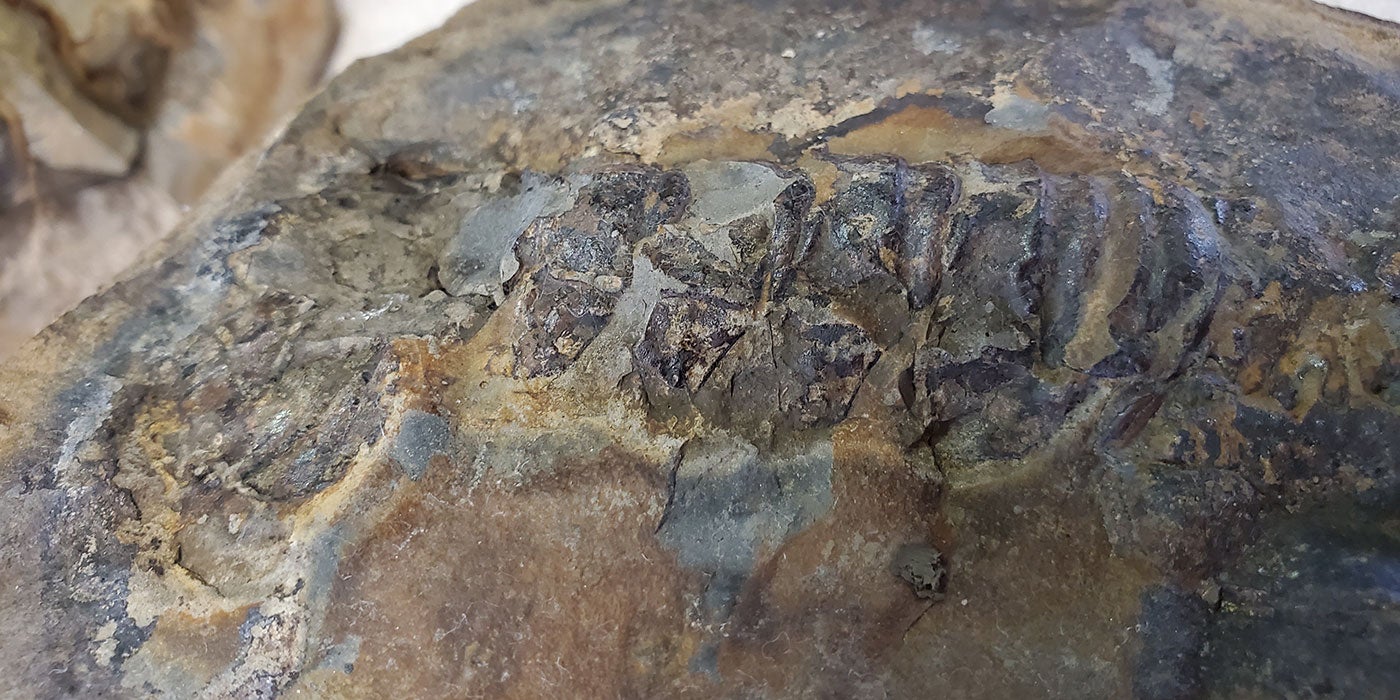Bison and Lobsters: Neighbors Separated by 75 Million Years

In late July, I was exploring along Box Elder Creek in Montana, not far from the field site where I work as an ecologist for the Smithsonian Conservation Biology Institute. Seventy five million years ago, during the late Cretaceous period, this area of the Northern Great Plains was the floor of a shallow sea. Today, fossils can sometimes be found along the undercut banks of the creek where flowing water has eroded the soil and rocks, creating an overhang or small cliff.

I wanted to check it out before wrapping up my bird field season. My friend Sze Wing Yu, a graduate student studying how bison affect streamside vegetation, surveyed the area last year and saw a lot of baculites — extinct, Cretaceous-era sea creatures that look like uncoiled nautiluses with long, tapered shells. These baculite fossils are pretty common, and they are great markers for areas of soil that might be rich in other fossilized, ancient sea creatures.
When I arrived at the creek, I quickly realized that the bulk of the baculites occurred within ironstone concretions, which are basically balls of hard rock within lots of crumbly mudstone. I broke apart three or four concretions using a nearby granite boulder as an anvil and was picking through shards of rock when I noticed one piece with a pattern too uniform to be normal rock. It was covered in mud, but underneath I thought I could see regular, raised bands about 5 inches long — a possible fossil. I threw it in my backpack and continued the hunt.

My search didn’t turn up anything too spectacular, or so I thought. Nonetheless, enjoying the creek alone on a beautiful Sunday (with only minor harassment from mosquitos) made for a spectacular evening. Arriving home, I decided to wash and brush off the pieces of rock I had brought back.
First up was the mystery piece with raised bands. I thought it might be some sort of backbone, or maybe an ammonite fossil (another spirally sea creature). But once I had cleaned it off, I had absolutely no doubt about what I was looking at. I grew up in Rhode Island and worked on recreational and commercial fishing boats for years as a young adult. This was a fossilized lobster (or something very similar)!

Given the size and shape, I thought that perhaps it was an ancient squat lobster or mantis shrimp, whose relatives now live in tropical seas. With a little internet sleuthing, my first instincts were validated. This was almost certainly Paleonephrops browni, a 75-million-year-old ancestor of modern lobsters and shrimps.
I contacted my colleagues at the Smithsonian's National Museum of Natural History to confirm and to ask if they were interested in the fossil. As soon as COVID-19 restrictions allow museum curators to return to work, this ancient crustacean will be leaving its place of honor on my bookshelf in Missoula, Montana, and making the trip back east to join the museum’s collection. Not bad for a day off!
Please note that rules around fossil collection may vary by location and type of fossil, so be sure to check local regulations before collecting any fossils.



